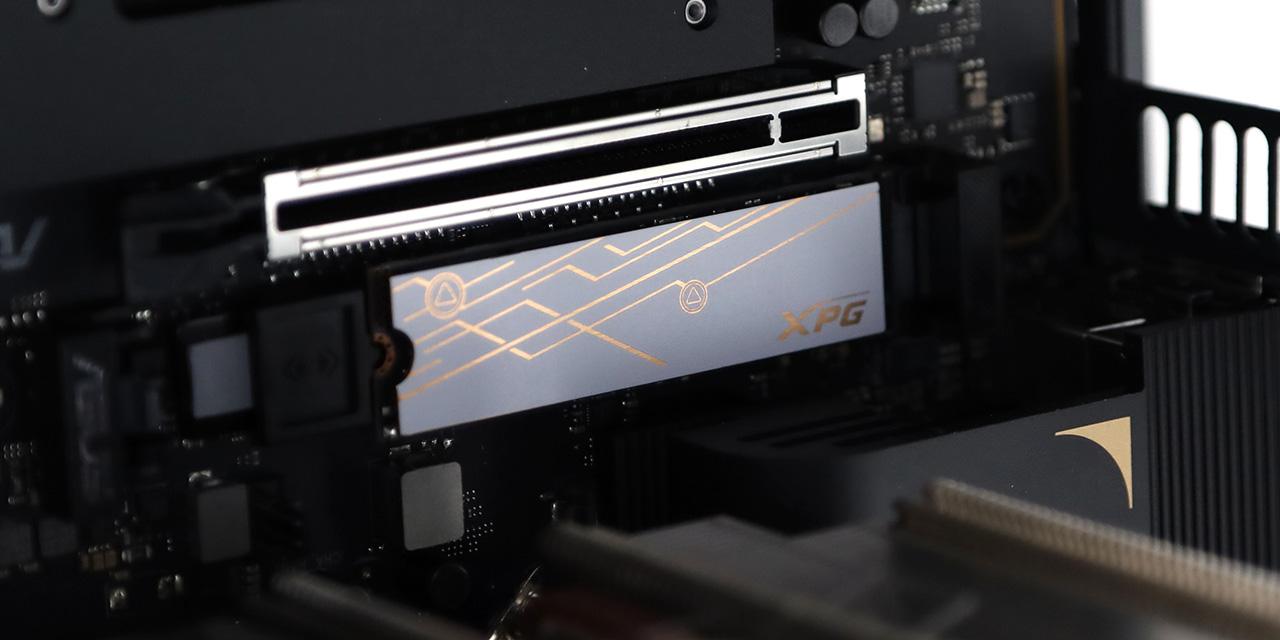Page 2 - A Closer Look - Hardware
The Asus Xonar U1 used in our review is the silver version; which in my opinion looks the best as a piece of audio equipment -- in fact, it sure feels like it too. The shiny aluminum surface has a cool feel to the knob, which adds to the vibe without a doubt. You know, like those receiver knobs.
The circular shape of the Asus Xonar U1 certainly isn't big, and would fit in most laptop bags without problems -- but it's quite a bit bigger than I thought it would be. Regardless, the circular top can be spun around and used as a volume knob, while pushing it down mutes or unmutes the sound output. A LED located 180 degrees from the Asus logo can either glow blue steadily when it's on custom settings, steady blue on Hi-Fi mode, and red when it's on mute. It also glows violet when it's receiving power, but not communicating with the drivers on the computer. Quite a convenience and really cool for this design in general.
The bottom section features two 3.5mm jacks -- one input, and one output. Each jack features multiple functions; the input jack can be a line-in or microphone-in, while the output jack can either be configured within software for headphone usage (Amplified), line out, or optical out with the included adapter. Across from it at the back is where the relatively short USB cable connects to your computer.
The volume knob, or basically the entire top of the Asus Xonar U1, can easily be removed by a simple pull with a little added force. Revealed inside is a small single PCB that's basically the heart of the Xonar U1 external audio solution.
The capacitors used inside the Asus Xonar U1 are manufactured by United Chemicon KMG; much to our surprise it retains traditional electrolyte capacitors rather than following the popular trend of using solid state capacitors.
Operational amplifier (OPAmp) used on the Asus Xonar U1 is National's LM358 OPAmp.
The potentiometer utilized in the center that corresponds to the volume knob offers a minor feedback when turned, giving each turn distinct and holds the volume knob in place until a higher force is applied. As described earlier, pushing it down will either mute or unmute the output on the Asus Xonar U1.
The Asus audio processor used on the Asus Xonar U1, as far as I know, is a rebranded C-Media Nitrogen D2 USB audio chip. C-Media has been producing many enthusiast oriented audio chips that's used in many highly regarded computer audio solutions; and the Nitrogen D2 is a 16-bit stereo USB audio processor that supports Dolby Digital Live (DDL) and DTS:Interactive.
A single NEC UC2 low profile relay is located on the Asus Xonar U1. This is the same relay used on the Asus Xonar D2; except the Xonar D2 has six NEC UC2 low profile relays on the board.
The Asus Array Mic. With the microphone, it's designed to ignore environmental noise and only capture the emitted frequencies directly facing it -- usually your voice. This is done by minimizing surrounding sound frequencies and amplifying the input directly in front of the mic. The microphone's supporting wire bends nicely like one of those Ikea lamps, and the black and white color scheme looks fairly decent. My only complaint is the extremely short 3.5mm lead out cable that connects to your audio device, which is less than half a meter long. While one can argue that usually the Asus Xonar U1 is used when placed on the desk and does not need such a long microphone cable, there are situations where longer cable length is appreciated.
I pointed the microphone towards myself with the outer black mesh on the side of the mic facing away from me to properly orient the Asus Array Mic. Asus Array Mic setting is enabled in the Asus software to make it work with the microphone (Otherwise the mic will act just like any mic). I began playing music in the background. Using Wavelab on the side to capture the input, the Asus Array Mic would not and did not magically block out all the noise. However, to my delight, the audible environmental sound captured is a lot less than without it -- especially in VOIP programs that ignores low input sound, while I was chatting with someone on Skype the person on the other side of the conversation could not hear anything until I cranked the music past the audible level of his voice on mine. The microphone was approximately 50cm away from the speakers. Generally, if you like listening to music while chatting with someone and don't want the person on the other side to hear what you are listening to, this will surely come in handy.
Page Index
1. Introduction, Specifications, Bundle
2. A Closer Look - Hardware
3. A Closer Look - Software
4. RightMark Audio Analyzer 16-bit/48 kHz
5. Subjective Listening and Conclusion





